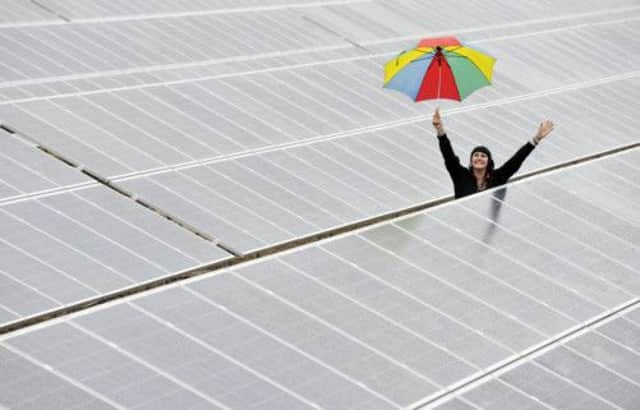A new generation of pioneers in power


Energy bills are only going one way in the foreseeable future – and it isn’t down. So why wouldn’t you take the chance to generate your own energy to save money, and potentially generate income too, by selling excess power into the grid?
That’s what an increasing numbers of farmers, landowners, public bodies and community groups are doing across Scotland, as they install renewables on their land or in their properties.
Advertisement
Hide AdAdvertisement
Hide AdWhile much of the policy discussion about renewable energy concentrates on large-scale wind farms, on-site renewables is a rarely told success story. New figures produced to coincide with Scottish Renewables’ On-Site Renewables exhibition and workshop in Perth last week revealed that almost £20 million of renewable electricity is being generated on-site across Scotland annually – from wind turbines to solar panels, biomass boilers, small-scale hydro schemes and heat pumps.
Carbon footprint
Those installing on-site renewables are driven by a desire to reduce their energy bills and lower their carbon footprint, while some of the systems also generate electricity which can be sold back to the grid. Electricity generated on-site is growing exponentially, with the total installed capacity of renewable energy devices on-site trebling in the last five years alone, and £19.3m of electricity generated by these schemes every year.
Businesses and individuals interested in joining the on-site revolution – and taking their energy future into their own hands – were given a range of information at last week’s exhibition on the technologies available to them by businesses and organisations who have been there and done it.
The overall picture was positive, but many of those involved stressed that undertaking an on-site renewables project can be a lengthy process, with many challenges.
The planning process can be complex and daunting for the first-timer and it’s for this reason Scottish Renewables is producing a guide, Small Wind Planning: What You Need To Consider for those looking to put up wind turbines.
As well as planning, the other bugbear is understanding the precise workings of the Feed In Tariff (the system for getting excess power into the grid system) and the Renewable Heat Incentive, a long-term programme of financial support for producing heat from renewable sources. However, those who have been through the system had a clear message; persevere, it’s worth it.
Neil Butler, owner of Stewart Tower Dairy in Perthshire, installed an on-site wind turbine to produce enough power to make and store ice cream.
A very attractive option
The turbine provides almost half the power for fridges, freezers and compressors at the dairy, near Stanley, saving Stewart Tower enormous amounts at a time when power bills are rising around 10 per cent per year.
Advertisement
Hide AdAdvertisement
Hide AdWhen you look at that kind of price rise, on-site renewables look a very attractive option.
They also proved attractive to Queen Margaret University on the outskirts of Edinburgh, which has used a biomass energy centre to provide heat and hot water to academic buildings, the students’ union and 800 residential units for the last five years.
Steve Scott, Director of Campus and Commercial Services at QMU, also stressed that it had not been an easy ride and described a range of teething troubles. However, while the university had been looking at a seven or eight-year payback, the energy centre has actually paid its way in six years.
Chris Evans, whose small hydro scheme at the Noddsdale estate in North Ayrshire sells its power into the grid via Smartest Energy, is also happy with his proposed payback period of 8½ years. Beyond that, the estate will have what he described as “a fairly healthy income stream”.
Mr Evans told the on-site event that he had sought out as much advice as possible before pressing ahead with the scheme, which included speaking to developers of similar hydro schemes who were a couple of steps further down the road.
All these examples – and more described at the event – have made a success of on-site renewables.
All of the speakers offered two similar messages; 1) it’s worth it and 2) get expert advice as early as possible.
These guys are among the pioneers – but many more people across Scotland are following their lead and taking their energy future into their own hands.
• Stephanie Clark is Scottish Renewables’ Policy Officer for Onshore Renewables, see www.scottishrenewables.com
SEE ALSO